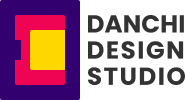I had an amazing time connecting with the design and product community at the UXVN Festival 2024. This year’s discussions were all about defining your value, exploring new-possibilities and stepping into leadership for designers. AI and cross-team collaboration were hot topics, sparking lots of conversations. Below are some highlights that I truly connected with from the conference.
How much does a design screen cost?
When Nang Nguyen asked this question during his speech on UX Impact: Transforming UX from “Cost” to “Investment”, my mind immediately started calculating the time and price it would take for me and my team to work on a screen. But then… I was truly impressed by Nang’s insights.
The cost of a design screen includes much more than just the design itself. It covers research to understand user needs, validation to ensure the design works, and the creation of wireframes and final designs. Development turns the design into a working product, followed by the launch and testing phase. Finally, ongoing customer support and updates to improve the user experience also contribute to the overall cost.
This insight was a real “wow” moment for me. I thought I’ve always known the value of teamwork and cross-team collaboration, but I had never really thought about how my design also takes up other people’s time and effort. It brought me to a new level of mindfulness, changing how I view a computer screen – not just as something I work on individually with my product team, but as a part of a larger organizational process that involves multiple teams.
Should I lead?
I reached a point where I disagreed with my managers. There were opportunities to build the product in a more thoughtful way, they chose to skip those steps and focus on speed-developing clickable-features to sell to the market, which, I believe, AIs could also do now, even faster. I wished I had a stronger voice in contributing to design decisions, but at the time, I was just a designer.
“Should I lead?” was the question Duong Le raised in his speech about Design Leadership in a Startup, and it snapped me into realizing the source of my disagreements.
From Duong’s speech, I learned that his design leadership starts with the right mindset → understanding context → taking action.
The right mindset helps him stay positive, learn from challenges, and lead his team through changes. Understanding context means knowing the company’s goals, the team’s needs, and the challenges he’s facing, so he can make thoughtful decisions. Taking action is how he turns ideas into real results.
There were a lot of leaders speaking at the conference, but I really connected with Duong and his journey of growing as a leader. I feel like I can align my own working style with some of his leadership traits. Here are my notes from his speech – these keywords hold so much valuable knowledge I need to learn for my next chapter. Every time I go through the note, I get emotional. Honestly, I’m even tearing up as I write to this section. (Sorry, I’m not sure why, but I just need to express my emotions here okie? Maybe it’s because I realized there’s so much more to learn ahead?)
Connecting with Real-users
Jon‘s speech on Immersive Product Category Research was interesting, highlighting the methodologies and possibilities for approaching research in unfamiliar domains.
Hence, my most memorable insights from Jon’s talk were that, in the age of AI, we have access to a vault of data and information, but “real” product research goes beyond that. It’s about understanding how people use and connect with products by experiencing the product or service alongside them. We can analyze competitors by reading news and articles, and we can also engage with communities and use social media to gain insights and improve products, among many other methods.
I began to see the importance of the “liveness” aspect of product research, which involves real-engagement with users to make more informed design decisions. At first, I found this concept somewhat idealistic when I attended the other session he shared back in 2023. But… after reflecting on “liveness” in product research, it became clearer and more approachable. Well… at least from my perspective and for my personal project, where I have the flexibility to design things my own way.




